
Article contents

The best card to use abroad isn’t actually a credit card, it’s Currensea, a debit card that links directly to your bank account. When you spend in the local currency, it charges your account in Pounds, saving loads of cash (in bank fees). Wise and Revolut are also epic travel cards. If you’re looking to borrow cash, check out the Barclaycard Rewards credit card.
Getting away for a nice break? Or maybe travelling for work? It’s often a great idea to spend in the local currency to save a load of cash in bank fees (and even more from hidden fees) – a travel card allows you to do this.
Now, there’s a few different types of cards you could use, and some are credit cards (where you borrow money), but really, the best cards are prepaid travel cards (where you add money to them first). We’ll cover why below, but before that, here’s the best travel cards:
The best travel card overall.
Currensea tops the list – it's super simple to use, just connect it to your bank account and it’s low cost too. You'll also get a £5 welcome gift.
£5 welcome bonus



With Currensea, you can get a travel card that connects directly to your bank account – it acts just the same as your bank card, and transactions come directly out of your bank account.
The only difference is you won't have to pay hefty bank fees, saving anywhere from 85% to 100% of the cost.
It's a great alternative to a prepaid travel card if you want something a bit simpler.

Currensea tops the list – it's super simple to use, just connect it to your bank account and it’s low cost too. You'll also get a £5 welcome gift.
The best prepaid card (top up beforehand).



Wise is one of the best travel cards out there. It's super popular, with over 16 million customers around the world.
It's got some of the lowest fees you'll find, and it's available in over 40 currencies and 150+ countries.
The card is contactless, and there's a great phone app (and website) to manage everything too.

Get 3 months of Premium free



Revolut is everything money related in a pack-out app.
It's great for travel. With a Revolut account (and card), you spend abroad and benefit from low fees – and hold and spend multiple currencies at once.
With a paid plan, you'll also get access to airport lounges (at a discount), and there's cashback on future hotel bookings.
Overall, the app itself is great. You can save, invest, transfer money (worldwide), and more. There's even a business account.

Currensea tops the list – it's super simple to use, just connect it to your bank account and it’s low cost too. You'll also get a £5 welcome gift.
Borrow money as you spend (pay back later).



The Barclaycard Rewards Card is the best option for travelling if you’re after an actual credit card (need to borrow the money).
There’s no annual fees, and no fees to spend money abroad, or to withdraw cash, and it uses the Visa exchange rate (which is low, although not quite the ‘real’ exchange rate).
You’ll also get 0.25% cashback on your spending.
Interest rate: usually 25.9%, but can go up to 31.9% – make sure you repay in full every month to avoid these high fees. There’s also fees for late payments (you have been warned).
Credit limit: usually borrow up to £1,200.

Currensea tops the list – it's super simple to use, just connect it to your bank account and it’s low cost too. You'll also get a £5 welcome gift.
To compare travel cards, we’ve looked at a wide range of options – and haven’t just looked at credit cards, but also prepaid travel cards, and debit cards too.
Credit cards can be a great option, but really, you don’t need one if you’re just looking for a travel card to spend abroad. A credit card is where you borrow money to spend and then pay it back later, often with interest, and often with a monthly or annual fee – also, they can include a fairly long application process, including credit checks (where they check how good you are with money).
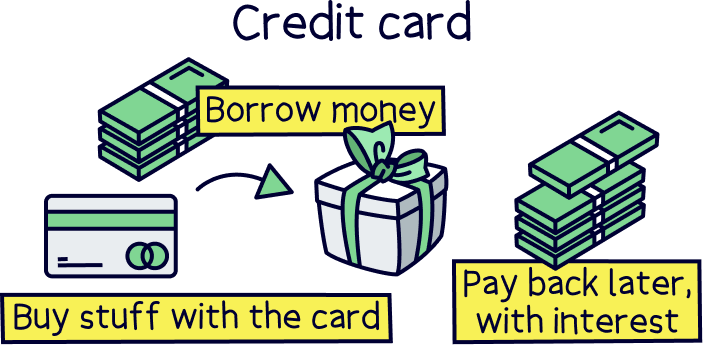
It’s not often worth the hassle for a holiday once per year, getting a prepaid travel card is much easier (it takes minutes to sign up and you can have the card the following day), and often much cheaper for overseas spending than using a credit card anyway (plus no credit checks).
A prepaid travel card is one you top up before you go (or even while you’re abroad), and then simply convert your money in the currency you want to spend (on their app or website), and then spend away – just as you would at home.
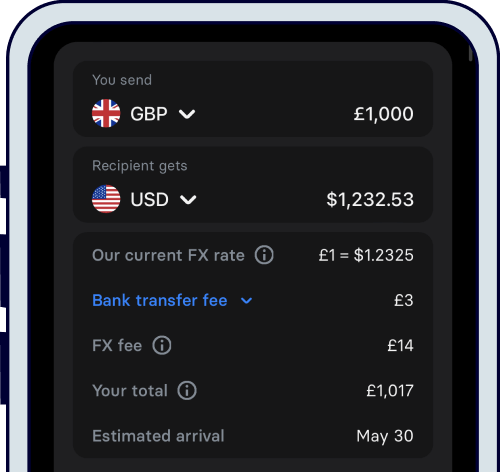
You’ll be spending in the local currency. For example, spending Euros in Europe (the best way to spend money abroad). Meaning you avoid all the hefty bank fees (if you used your normal bank card), the exchange rate to convert your money is one of the best you’ll get, and the overall fees are super low too. Sounds pretty great right?
That’s why we’ve found prepaid travel cards such as Wise¹ the best option – you can save a small fortune compared to your bank, and they come in cheaper than all other travel cards, plus they’re completely free to set up and have an account (Wise has a £7 Wise card delivery fee).
Or, an even simpler option is Currensea¹. It will connect to your bank account, and when you use it abroad, you’ll automatically spend in the local currency, and it comes out of your bank account in Pounds (saving loads in bank fees). How great is that?

Here’s the criteria we’ve used to find the best travel cards:
As we mentioned above, there are a range of options available, such as credit cards, debit cards and prepaid travel cards, and you could even take cash (how old fashioned), although please don’t change your cash at the airport, it’s super expensive.
We’ve found prepaid travel cards are the best option for most people – they’re typically the cheapest, easy to open, and super easy to use (just top up online). Plus, you can avoid paying interest (which you might with a travel credit card).
We’re also only recommending the best options – ones that we recommend to our friends and family, and use ourselves here at Nuts About Money, so you can be confident that whichever one of our recommendations you pick, you’ll be using one of the best options out there.
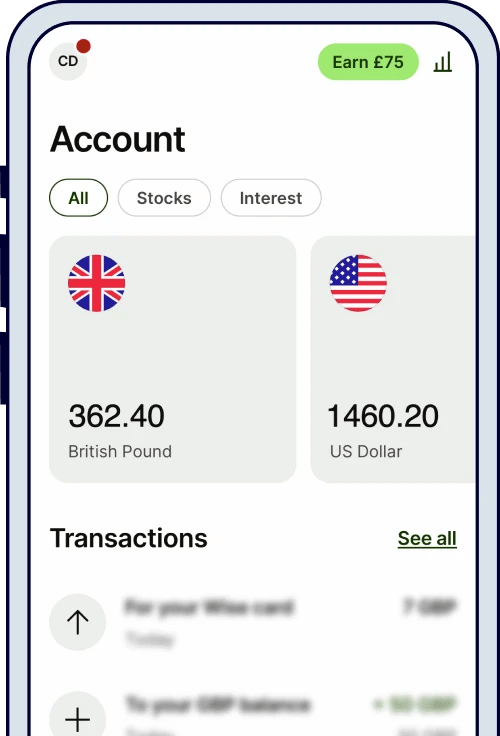
First, let's run through what a credit card is, then cover travel credit cards after.
A credit card is a card where the money you are spending is actually lent to you by the credit card company (called credit), and then you’ll pay it off later, normally after a month or so (but can be longer).
They’ll charge you interest (which is a fee to borrow the money, such as 20% of your spending every year), which is normally only charged if you don’t repay all of the money you’ve spent in the following month (called an interest free period).
Nuts About Money tip: always repay in full the following month – otherwise you’ll face hefty fees. If you can’t repay in full, pay as much as you can to avoid late fees.
You’ll typically have a credit limit, which is how much you can spend, and this depends on your personal circumstances. For instance, if you repay loans consistently and have a good credit rating (a score of how good you are at paying back money), you might have a higher credit limit (can borrow more money).
Credit cards are often used because they have a slightly higher level of security when it comes to purchases – for example, you can get your money back a bit easier if there’s been any fraudulent activity.
They also offer rewards when you spend, such as cashback (simply money back), or points, which can be used for things in future, such as getting discounts on travel, or buying things directly in points once you have enough.
And as you’re using credit (borrowing money), it can also increase your credit score over time (providing you pay the money back consistently every month).
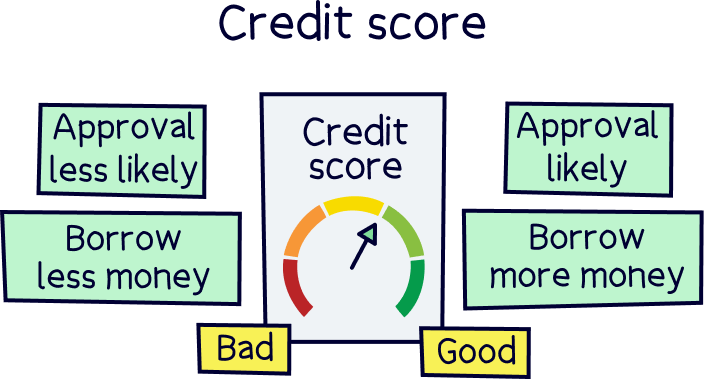
Or, you can simply borrow the money without paying it back the following month, if you don't have the money, or perhaps for a big purchase, but you’ll probably pay lots in interest until you do pay it back.
A travel credit card is a credit card designed for, you guessed it, travel. Typically credit cards have hefty fees for ATM withdrawals, and very expensive fees to spend money abroad in a different currency (foreign transaction fees, also called a non-sterling transaction fee).
With a specialist travel credit card, these fees are reduced. There’s often still fees, but much lower. Normally, you can withdraw from an ATM for free (up to a certain limit per day or month), and then pay a fee when you spend money on the card (alway spend in the local currency) – although there may not be any fee depending on the card.
They’ll also typically use a good exchange rate, such as the Visa exchange rate, or Mastercard exchange rate (depending on the card), which is one of the best out there, just slightly above the ‘real’ exchange rate which the banks use themselves. Confused? Don't worry we've explained what these are below.
And finally, they can offer rewards too – such as cashback on your spending, or earning points to spend on things later down the line.
Sounds pretty good right? They can be, but not all of them, so always check the charges. You’ll also still have a credit limit, which is how much you can spend, and remember, always pay it back in full every month, otherwise you’ll be charged a lot of money in interest.
Often travel credit cards have similar, or worse exchange rates than prepaid travel cards – which have a low exchange rate with no hidden fees, and are much easier to sign up for (quicker with no credit checks).
A prepaid travel card is one of the best cards to use abroad. It’s the same type of card as a credit card (e.g. it’s a Visa or a Mastercard), except instead of borrowing money from the credit card company when you spend money (and then paying them back), you’ll need to top up (add money) beforehand, you'll be spending your own money.
There’s typically a mobile app, or online account to go with it, and you simply manage your money within the app, and convert your Pounds to whichever currency you’d like to spend, such as Euros on your Spanish holiday.
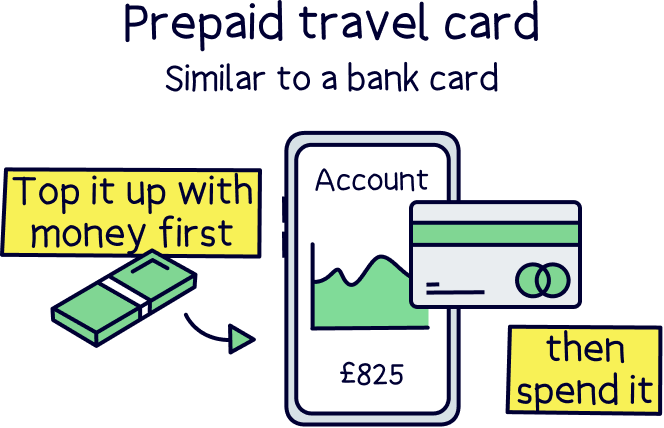
Although saying that, with Wise¹, you could actually keep your money in Pounds, and simply spend away in Euros and it will be converted automatically (called dynamic currency conversion).
You can actually store multiple currencies in your account, and have them ready for whenever you want them. Meaning, if you see a great exchange rate, you could convert your money there and then, and just keep your money ready for your holiday later down the line.
Prepaid cards are as simple as that, and great options for travelling. They typically have no account fees, or monthly fees, and just a fee to convert money, which is very low, and use the real exchange rate that banks use (so no hidden fees either).
However, not all prepaid travel cards are the same.
We’ve covered credit cards and prepaid cards, so let’s run through debit cards quickly too. A debit card is a card linked to your bank account – and is still a Visa or a Mastercard, depending on your bank.
As you spend, your money is taken out of your account, as simple as that.
This bit is super important, using your debit card with your bank account is never a good idea for your holidays – there’s loads of fees. Using a prepaid travel card can be as much as 10 times cheaper.
Banks are not your friends, and using a debit card abroad would mean you use the bank’s own exchange rate (which is often very bad), often a fee every time you use your card (a foreign transaction fee), and fees to withdraw money from an ATM abroad. These add up every time you use your card, and can be very expensive, without you even realising. Never use your debit card abroad!
Having said that, there's a great alternative, which is Currensea¹. It’s a debit card that links to your bank account, so works exactly the same as your current card. However, when you spend on your Currensea card in the local currency (like Dollars or Euros), it comes out of your account in Pounds. There’s low fees too, and free cash withdrawals (up to a limit).
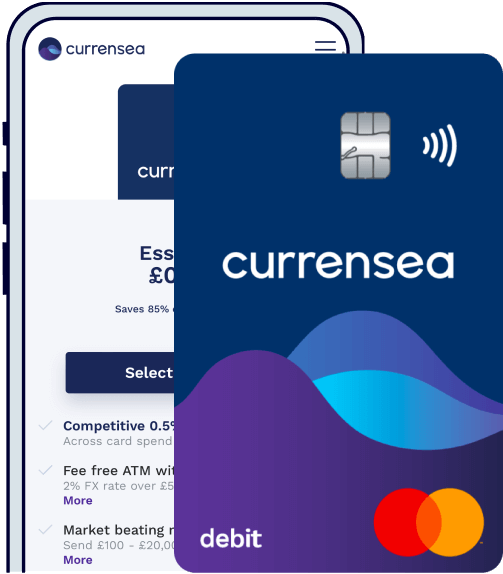
Here’s the pros and cons of using a travel credit card:
Here’s the pros and cons of using a prepaid travel card:
All the best travel cards use something called the mid-market rate as their exchange rate, which is also known as the ‘real exchange rate', or the 'interbank rate'. (Banks don't give their customers this rate, they use their own one, which includes hidden fees.)
The mid-market rate is the rate the banks use to swap money between themselves, it’s a fair rate, as it's the same for every bank, and there’s no hidden fees – it’s the actual exchange rate set by the ‘market’, that’s where lots of buyers and sellers are coming together and a price natural emerges from supply and demand.
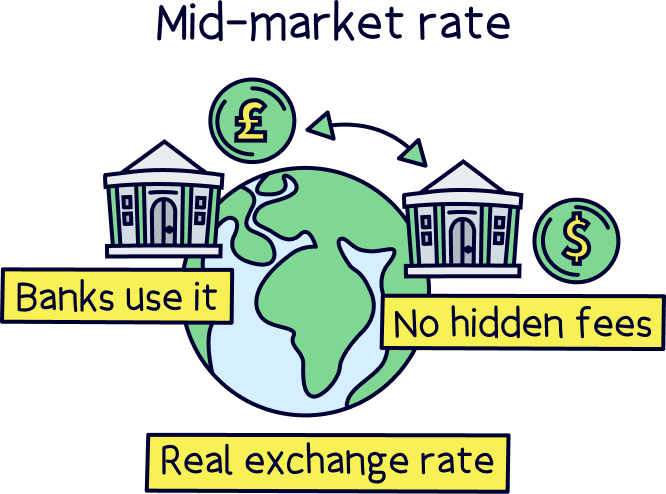
It’s technically the midpoint of how much a currency is to buy, and how much it is to sell (the middle).
For Euros, there’s also an official rate, called the European Central Bank (ECB) rate. This is set by the European Central Bank (an organisation that looks after the finances of countries in Europe).
You’ll never actually get this rate, but the real rate should be very close to it.
There’s also other rates, which are set by the card providers, Mastercard and Visa. It’s very similar to the real exchange rate. They include a tiny fee in this rate, but generally it’s a very good rate.
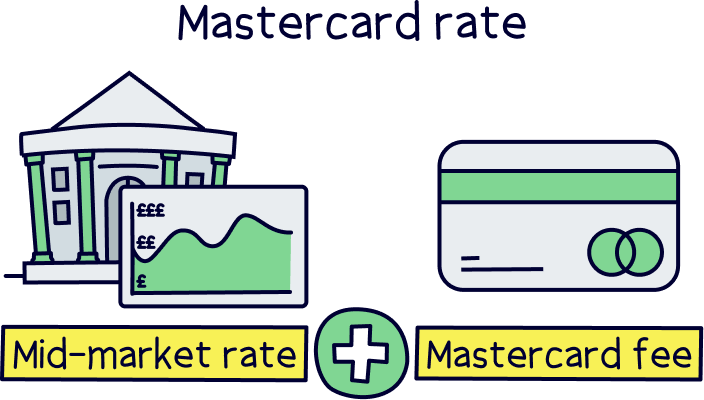
Companies who use Mastercard or Visa cards can choose to add their own fee on top, or not.
If a company says it’s simply using the Mastercard rate it’s typically a great rate, with no fees added on, it’s likely one of the cheapest you’ll get.
There will always be an exchange rate when swapping a foreign currency, whichever card you choose to use, but some exchange rates are (much) better than others!
The best cards will use the mid-market rate, also called the interbank rate, or the ‘real’ exchange rate. This is the rate banks use to change money between themselves and so no extra fees.
If you use a bank to exchange money, they’ll use their own exchange rate, which has a hidden fee. Meaning, the exchange rate will be worse than the ‘real’ rate, and they pocket the difference.
Sneaky right? This is the same if you change money at the airport, or any bureau de change.
Withdrawing money from an ATM abroad can often have fees too – and this can be a lot, for instance 2% of how much you withdraw, or a set fee, such as £1 per withdrawal, or even both.
The best cards typically have a certain amount per month where it’s completely free to withdraw money (all of our recommendations). And this can go up to £500 per month free.
Unfortunately not everything is free, and there can often be a delivery fee for the physical card – it can involve a lot of admin to create the card, and of course delivery fees from the couriers which are charged to the card provider.
Expect to pay around £5-10 for a card, and any replacement cards if you lose them (Wise¹ is £7).
If you don’t use your card for a while, normally over 12 months, there can be an inactivity fee, and this is typically a monthly fee, such as £2 per month.
All the best cards we recommend don’t have this fee – so are perfect to leave in the drawer until your next holiday.
Getting a travel money card is super easy – as long as it’s not an actual credit card.
With prepaid travel cards, all you need to do is open an account online (or through their app), prove your identity and that’s it. It can take just a few minutes, and you could be spending away with a virtual card (an online card that you can add to Apple Pay or Google Pay, or buy things online). The physical card could even turn up the next day.
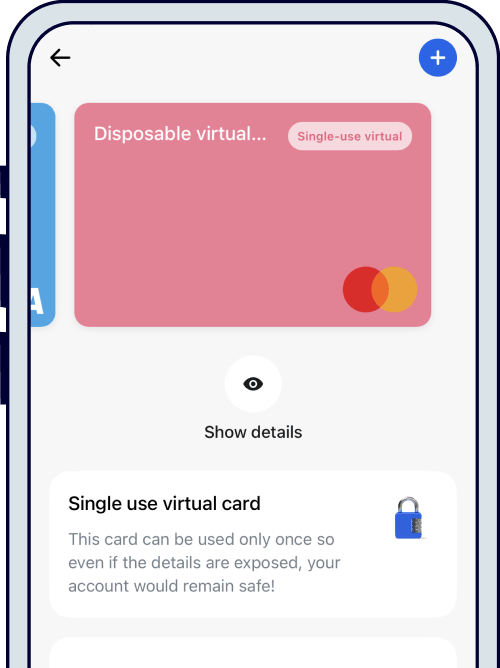
With an actual credit card, there’s lots more checks to carry out, and a ‘hard’ credit check will take place. This is a credit check that will see how good you are with money and leave a mark on your credit report (saying that you’ve applied for a credit card).
It’s a good idea to check the eligibility of a credit card first, to make sure you’re likely to be approved before you apply (so you don’t get a rejection on your credit report). You can normally check the eligibility criteria on their website.
If you're approved, you’ll get the card within a few days, and then you can start spending away.
Nuts About Money tip: set up a regular payment to pay off your spending in full each month to avoid interest fees.
Yep, it’s perfectly safe to use any travel card for overseas spending.
In fact, using a credit card abroad, or prepaid currency card, is much safer than using cash, there’s no need to have lots of cash stashed away in your hotel room (or in your sock).
And if you lose your card or it’s stolen, you can normally freeze (block) it immediately within the app itself (if you use one of our recommendations). You can also create new virtual cards to use with Apple Pay and Google Pay to pay for things using your phone too.
If there are any fraudulent transactions, you can dispute these too, and can get your money back – you don’t have this option spending with cash.
In terms of the companies themselves, our recommendations are safe to use. All financial companies need to be authorised by the Financial Conduct Authority (FCA) – they’re the people who make sure companies are looking after their customers and their money, which means strict checks and review processes.
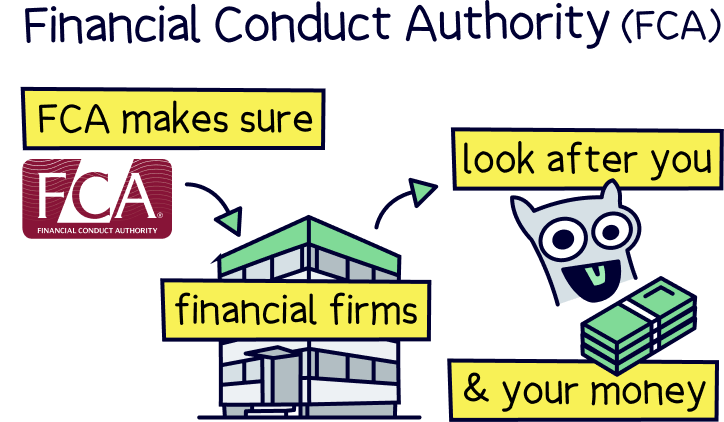
With the modern card providers (such as our recommendations) your money also has extra protection, where it’s held in a completely separate bank account from the company’s own money, with a large bank (e.g. HSBC), and can only be returned to you.
There we have it for the best credit cards to use abroad. Easier to understand than you thought?
Generally, we don’t recommend setting up a credit card to use abroad, even if it’s a travel credit card. There can be a lengthy application process with credit checks, and there aren’t really any benefits over other options, such as prepaid travel cards, and if you forget to repay it, you’ll be charged high interest fees. You’ll also have a credit limit and have to manage repayments.
Prepaid travel cards can be super low cost, very easy to use, and can come with an app (and website) with great features to help you manage your money (such as convert and hold multiple currencies, or freeze your card).
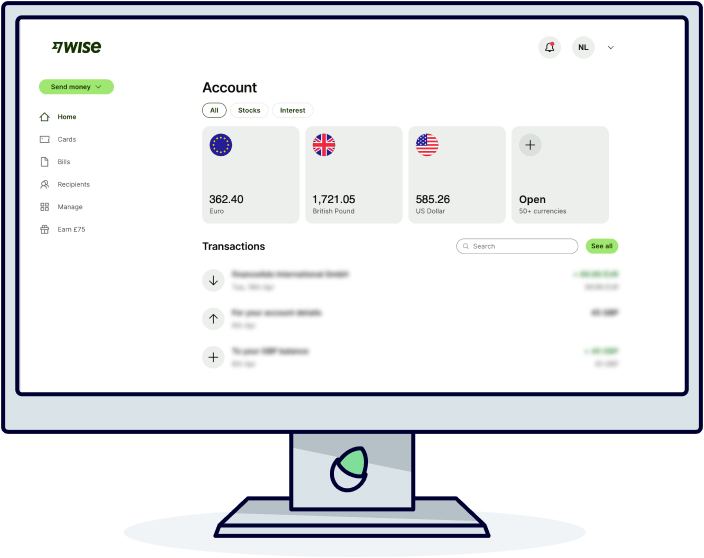
The best prepaid travel cards are the cheapest options out there, far cheaper than using your bank account, and cheaper than almost all travel credit cards. The account is free and you’ll simply pay a small fee when you exchange your money – and they all use some of the cheapest exchange rates too. Scroll up or click the best prepaid travel cards to see our recommendations again.
We also recommend Currensea¹, it’s a card that links directly to your current account, you automatically spend in the local currency (like Euros), and it comes out of your bank account in Pounds, all for a simple low fee (0.5%, or 0% on a paid plan).
We hope that’s helped make the right decision for you, now all that’s left to do is enjoy that trip away!
We’d love to hear from you, and it will help others too.
Currensea tops the list – it's super simple to use, just connect it to your bank account and it’s low cost too. You'll also get a £5 welcome gift.